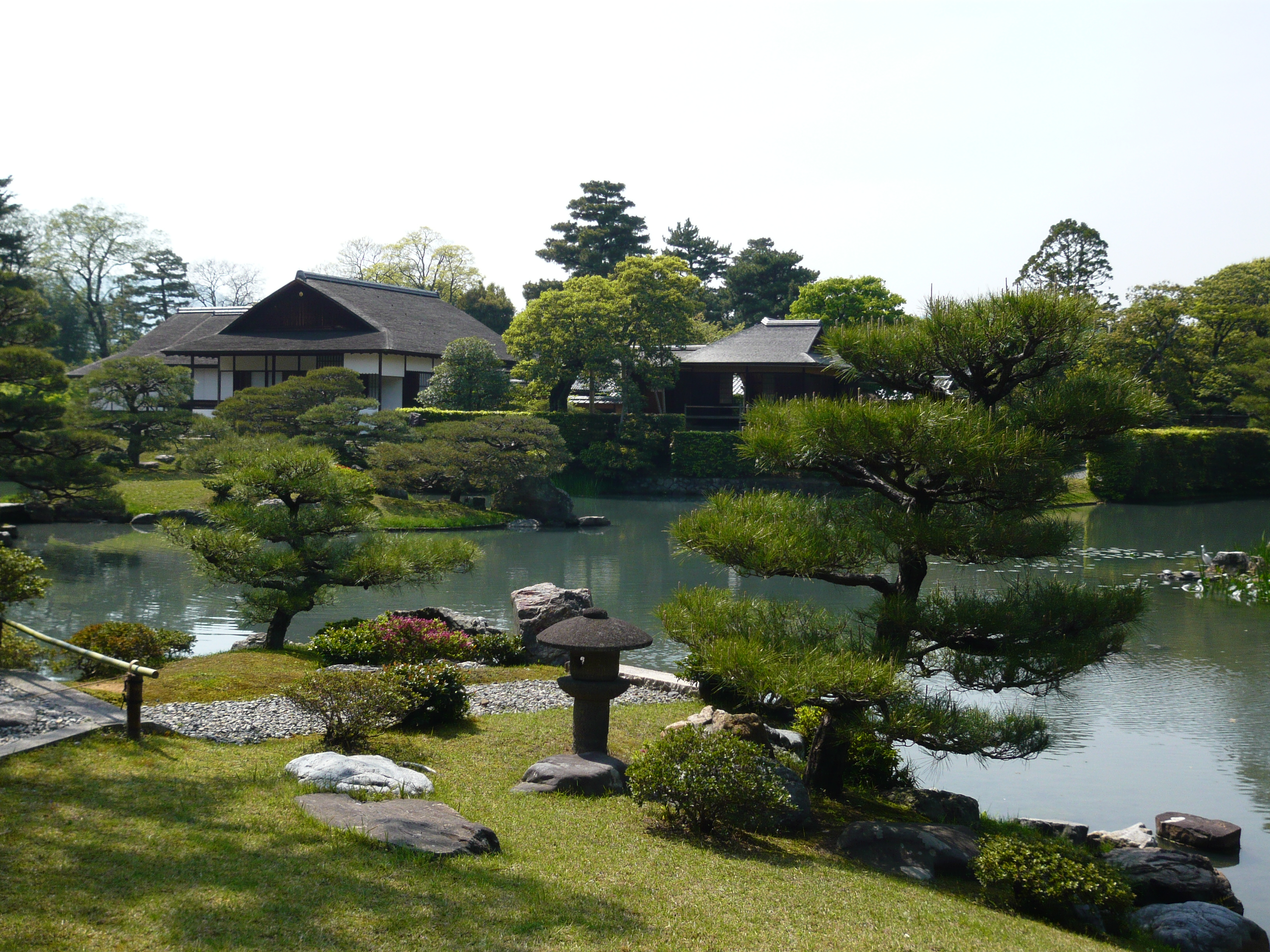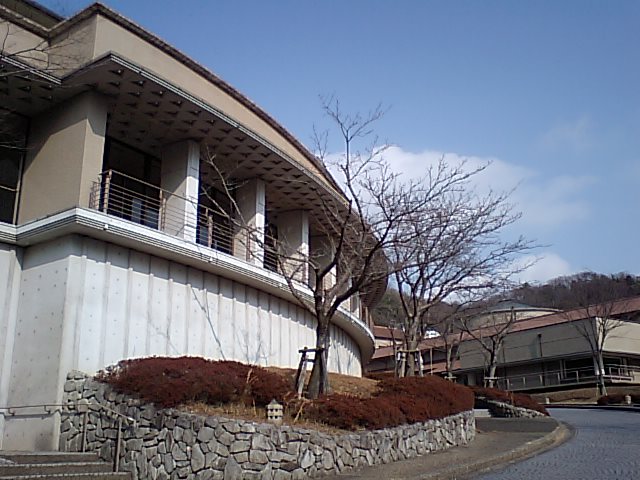|
Nishikyō-ku, Kyoto
is one of the eleven Wards of Kyoto, wards in the Municipalities of Japan, city of Kyoto, Kyoto, Kyoto, in Kyoto Prefecture, Japan. Its name means "west capital ward" and it is situated on the western edge of the city, to the south of center. The ward was established on October 1, 1976, after it was separated from Ukyō-ku, Kyoto, Ukyō-ku. The Katsura River is the border between Nishikyo-ku and Ukyo-ku. Katsura Imperial Villa, on that river, is one of the most widely known features of Nishikyo-ku. Saihō-ji (Kyoto), Saihō-ji, the Moss Temple, is a UNESCO World Heritage Site in the ward. Matsunoo-taisha, a Shinto shrine, is also located in Nishikyō-ku. As of October 1, 2021 the ward has an area of 59.24 km² and a population of 148,370. Demographics Education *International Research Center for Japanese Studies *Kyoto City University of Arts *Kyoto College of Economics *Katsura, Kyoto, Katsura Campus, Kyoto University References External links * Wards of ... [...More Info...] [...Related Items...] OR: [Wikipedia] [Google] [Baidu] |
World Heritage Site
A World Heritage Site is a landmark or area with legal protection by an international convention administered by the United Nations Educational, Scientific and Cultural Organization (UNESCO). World Heritage Sites are designated by UNESCO for having cultural, historical, scientific or other form of significance. The sites are judged to contain " cultural and natural heritage around the world considered to be of outstanding value to humanity". To be selected, a World Heritage Site must be a somehow unique landmark which is geographically and historically identifiable and has special cultural or physical significance. For example, World Heritage Sites might be ancient ruins or historical structures, buildings, cities, deserts, forests, islands, lakes, monuments, mountains, or wilderness areas. A World Heritage Site may signify a remarkable accomplishment of humanity, and serve as evidence of our intellectual history on the planet, or it might be a place of great natural beauty. A ... [...More Info...] [...Related Items...] OR: [Wikipedia] [Google] [Baidu] |
Katsura, Kyoto
Katsura (桂) is a neighborhood in Nishikyo-ku, in the western part of the city of Kyoto, Japan. Predominantly residential in character the district is situated and the western bank of the Katsura River. The neighborhood is renowned as the location of the Katsura Imperial Villa, a historic garden maintained by the Imperial Household Agency. Katsura is accessible from Katsura Station on the Hankyu Kyoto Line by train, and by buses offered by, among other organizations, the Kyoto Municipal Transportation Bureau. References See also * Katsura River The is a continuation of two other rivers, the Hozu River, a small, speedy river which begins in the mountains near Kameoka and then slithers through the mountains separating Kameoka and Kyoto; and the Ōi River (大堰川 ''Ōi-gawa''), whi ... Geography of Kyoto {{Kyoto-geo-stub ... [...More Info...] [...Related Items...] OR: [Wikipedia] [Google] [Baidu] |
Kyoto College Of Economics
is a private junior college in Kyoto, Kyoto, Japan Japan ( ja, 日本, or , and formally , ''Nihonkoku'') is an island country in East Asia. It is situated in the northwest Pacific Ocean, and is bordered on the west by the Sea of Japan, while extending from the Sea of Okhotsk in the north ..., established in 1993. The predecessor of the school was founded in 1907. External links Official website Japanese junior colleges Educational institutions established in 1907 Private universities and colleges in Japan Universities and colleges in Kyoto Prefecture 1907 establishments in Japan {{kyoto-university-stub ... [...More Info...] [...Related Items...] OR: [Wikipedia] [Google] [Baidu] |
Kyoto City University Of Arts
is a public, municipal university of general art and music in Kyoto, Japan. Established in 1880, it is Japan's oldest university of the arts (the predecessor of Tokyo University of the Arts was founded in 1887). Among its faculty and graduates have been 16 recipients of the Order of Culture, 24 members of the Japan Art Academy, and 10 artists who have been designated Living National Treasures. It has been associated especially closely with ''nihonga'' painters from western Japan. History The university was founded in 1880 as the in temporary quarters in the grounds of the imperial palace in Kyoto. Kyoto had lost its status as the nation's capital in 1867, at the beginning of Meiji Period, and the city was in danger of being left behind in the wave of modernization overtaking the country. In 1878, a group of painters petitioned the city government to establish a modern school of the arts to support the traditional arts and crafts, including painting, ceramics, and weaving. ... [...More Info...] [...Related Items...] OR: [Wikipedia] [Google] [Baidu] |
International Research Center For Japanese Studies
The , or Nichibunken (日文研), is an inter-university research institute in Kyoto. Along with the National Institute of Japanese Literature, the National Museum of Japanese History, and the National Museum of Ethnology, it is one of the National Institutes for the Humanities. The center is devoted to research related to Japanese culture. History The official origins of the institute are traced to an early study carried out by the Japanese Ministry of Education, Science, and Culture in 1982 on "methods of comprehensive research on Japanese culture". After surveying the field of Japanese studies for several years, the ministry, under the administration of Prime Minister Nakasone Yasuhiro, established the International Research Center for Japanese Studies in 1987 in Kyoto with the prominent philosopher Umehara Takeshi as its first Director-General. Prominent Kyoto academics Umesao Nobuo and Kuwabara Takeo also played key roles in the founding of the center. In 1990 the ce ... [...More Info...] [...Related Items...] OR: [Wikipedia] [Google] [Baidu] |
International Research Center For Japanese Studies
The , or Nichibunken (日文研), is an inter-university research institute in Kyoto. Along with the National Institute of Japanese Literature, the National Museum of Japanese History, and the National Museum of Ethnology, it is one of the National Institutes for the Humanities. The center is devoted to research related to Japanese culture. History The official origins of the institute are traced to an early study carried out by the Japanese Ministry of Education, Science, and Culture in 1982 on "methods of comprehensive research on Japanese culture". After surveying the field of Japanese studies for several years, the ministry, under the administration of Prime Minister Nakasone Yasuhiro, established the International Research Center for Japanese Studies in 1987 in Kyoto with the prominent philosopher Umehara Takeshi as its first Director-General. Prominent Kyoto academics Umesao Nobuo and Kuwabara Takeo also played key roles in the founding of the center. In 1990 the ce ... [...More Info...] [...Related Items...] OR: [Wikipedia] [Google] [Baidu] |
Shinto Shrine
A is a structure whose main purpose is to house ("enshrine") one or more ''kami'', the deities of the Shinto religion. Overview Structurally, a Shinto shrine typically comprises several buildings. The '' honden''Also called (本殿, meaning: "main hall") is where a shrine's patron ''kami'' is/are enshrined.Iwanami Japanese dictionary The ''honden'' may be absent in cases where a shrine stands on or near a sacred mountain, tree, or other object which can be worshipped directly or in cases where a shrine possesses either an altar-like structure, called a ''himorogi,'' or an object believed to be capable of attracting spirits, called a ''yorishiro,'' which can also serve as direct bonds to a ''kami''. There may be a and other structures as well. Although only one word ("shrine") is used in English, in Japanese, Shinto shrines may carry any one of many different, non-equivalent names like ''gongen'', ''-gū'', ''jinja'', ''jingū'', ''mori'', ''myōjin'', ''-sha'', ''taisha ... [...More Info...] [...Related Items...] OR: [Wikipedia] [Google] [Baidu] |
Matsunoo-taisha
, formerly , is a Shinto shrine located at the far western end of Shijō Street, approximately 1.3 kilometers south of the Arashiyama district of Kyoto. It is home to a spring at the base of the mountain, Arashiyama, that is believed to be blessed. It is said that during the move of the capital from Nara to Kyoto, a noble saw a turtle bathing under the spring's waterfall and created a shrine there. It is one of the oldest shrines in the Kyoto area, its founding extending back to 700 CE. The restorative properties of the spring bring many local sake and miso companies to the shrine for prayers that their product will be blessed. The shrine also serves a ''kinpaku miki'' (gold leaf filled blessed sake) during ''hatsumōde''. History The shrine became the object of Imperial patronage during the early Heian period. In 965, Emperor Murakami ordered that Imperial messengers were sent to report important events to the guardian ''kami'' of Japan. These ''heihaku'' were initially present ... [...More Info...] [...Related Items...] OR: [Wikipedia] [Google] [Baidu] |
UNESCO
The United Nations Educational, Scientific and Cultural Organization is a specialized agency of the United Nations (UN) aimed at promoting world peace and security through international cooperation in education, arts, sciences and culture. It has 193 member states and 12 associate members, as well as partners in the non-governmental, intergovernmental and private sector. Headquartered at the World Heritage Centre in Paris, France, UNESCO has 53 regional field offices and 199 national commissions that facilitate its global mandate. UNESCO was founded in 1945 as the successor to the League of Nations's International Committee on Intellectual Cooperation.English summary). Its constitution establishes the agency's goals, governing structure, and operating framework. UNESCO's founding mission, which was shaped by the Second World War, is to advance peace, sustainable development and human rights by facilitating collaboration and dialogue among nations. It pursues this objective t ... [...More Info...] [...Related Items...] OR: [Wikipedia] [Google] [Baidu] |
Kyoto, Kyoto
Kyoto (; Japanese: , ''Kyōto'' ), officially , is the capital city of Kyoto Prefecture in Japan. Located in the Kansai region on the island of Honshu, Kyoto forms a part of the Keihanshin metropolitan area along with Osaka and Kobe. , the city had a population of 1.46 million. The city is the cultural anchor of a substantially larger metropolitan area known as Greater Kyoto, a metropolitan statistical area (MSA) home to a census-estimated 3.8 million people. Kyoto is one of the oldest municipalities in Japan, having been chosen in 794 as the new seat of Japan's imperial court by Emperor Kanmu. The original city, named Heian-kyō, was arranged in accordance with traditional Chinese feng shui following the model of the ancient Chinese capital of Chang'an/Luoyang. The emperors of Japan ruled from Kyoto in the following eleven centuries until 1869. It was the scene of several key events of the Muromachi period, Sengoku period, and the Boshin War, such as the Ōnin War, the Ho ... [...More Info...] [...Related Items...] OR: [Wikipedia] [Google] [Baidu] |
Saihō-ji (Kyoto)
is a Rinzai Zen Buddhist temple in Matsuo, Nishikyō Ward, Kyoto, Japan. The temple, which is famed for its moss garden, is commonly referred to as , meaning "moss temple", while the formal name is . The temple, primarily constructed to honor Amitābha, was first founded by Gyōki and was later restored by Musō Soseki. In 1994, Saihō-ji was registered as a UNESCO World Heritage Site, as part of the "Historic Monuments of Ancient Kyoto".. Over 120 types of moss are present in the two-tiered garden, resembling a beautiful green carpet with many subtle shades. History According to temple legend, Saihō-ji was constructed during the Nara period by Gyōki, on the location of one of Prince Shōtoku's former retreats. The temple first operated as a Hossō temple dedicated to Amitabha, and was known as , a homophone of the current name. The name was selected because Amitabha is the primary buddha of Western Paradise, known in Japanese as . Legend states that such famous Japanese ... [...More Info...] [...Related Items...] OR: [Wikipedia] [Google] [Baidu] |





